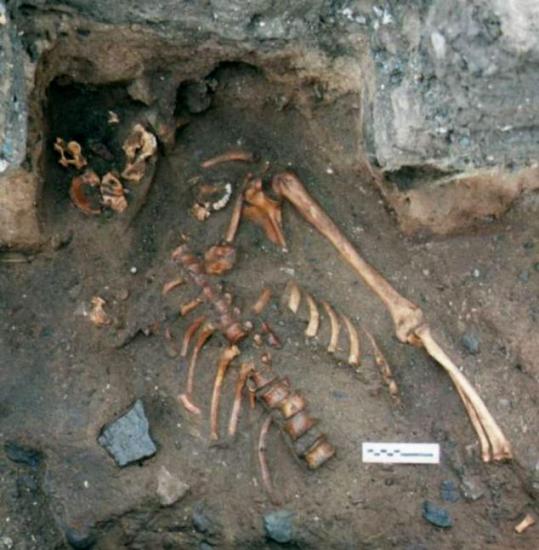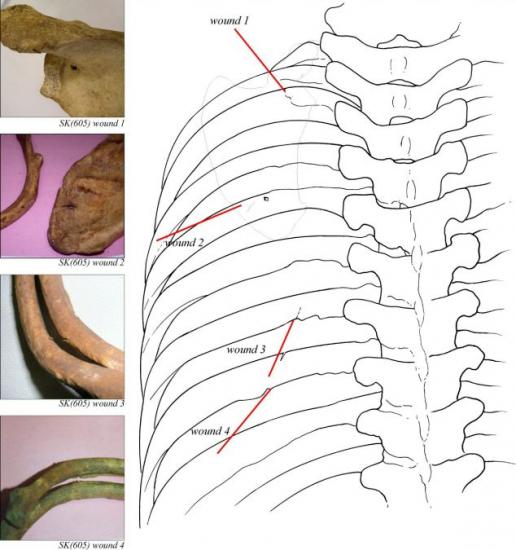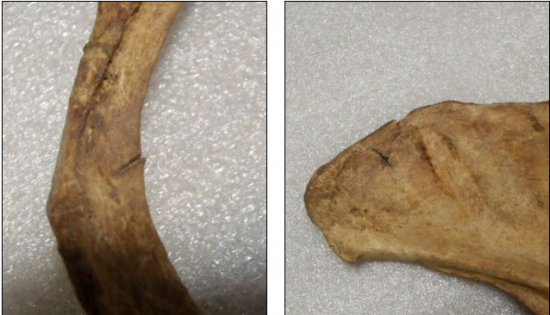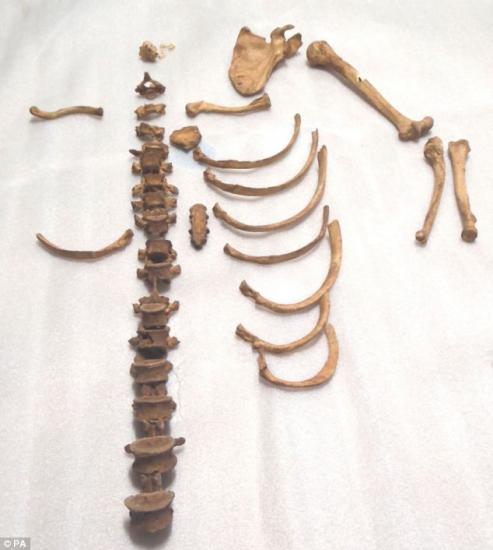Forensic tests on 900-year-old skeleton reveals he was stabbed in the back with a dagger
Rachel Reilly
Source - http://www.dailymail.co.uk/sciencetech/article-2564813/Mystery-medieval-murder-Forensic-tests-900-year-old-skeleton-reveals-stabbed-four-times-dagger.html
-
Archaeologists concluded that man found in East Lothian was in his 20s, slightly better built than average and may have been an archer
-
One expert said: 'It must have been a pretty clinical act by someone who knew what he was doing. It's a fascinating little snapshot of history'
-
It is not clear whether he suffered any further injuries because his legs and some of the right side of his body were cut away in a later burial
Archaeologists are investigating the discovery of a murder victim who was stabbed to death - almost a thousand years ago.
The skeleton of a young man found at the site of the Scottish Seabird Centre in North Berwick, East Lothian, is believed to date back to the 12th or 13th century.
The remains have been examined by forensic archaeologists who concluded that the man had been stabbed at least four times in the back with a dagger.

A medieval whodunnit: The skeleton of a young man found at the site of the Scottish Seabird Centre in North Berwick, East Lothian, (pictured) is believed to date back to the 12th or 13th century
Tom Addyman, an Edinburgh-based archaeologist said: 'This is a very unusual and fascinating discovery.
'This was a male in his early twenties who was brutally stabbed four or five times. He was a victim of violence.
'The injuries were caused from the back which indicates murder.
'Our bone specialist is very experienced, but he has not experienced anything like this before.

Forensics: This diagram reveals where the fatal wounds hit the young man when he was killed. Experts say the murder must have been a clinical act by someone who was experienced in using a dagger
'It must have been a pretty clinical act by someone who knew what he was doing. It's a fascinating little snapshot of history.'
Archaeologists concluded that the man was in his 20s, slightly better built than average, with wear to the shoulders suggesting he may have been an archer.
It is not clear whether he suffered any further injuries, because his legs and some of the right side of the body were cut away in a later burial.
Archaeologists believe the murder weapon was a dagger which must have been at least 70mm long with a symmetrical lozenge-shaped section and very sharp edges.

Archaeologists believe the murder weapon was a dagger which must have been at least 7cm long with a symmetrical lozenge-shaped section and very sharp edges (artist's impression pictured)

The skeleton had clear cut marks on it - rib bone pictured, left, and shoulder blade pictured, right. Experts also say the victim was stabbed from behind rather than from the front and that he did it with great precision
The dig also revealed structural remains, stone tools and ceramic materials which indicate that a community must have lived at the site.
The excavation was organised by the Seabird Centre, undertaken by Edinburgh-based Addyman Archaeology and supported by Historic Scotland.

Who was he? Archaeologists concluded that the man was in his 20s, slightly better built than average, with wear to the shoulders suggesting he may have been an archer
Tom Brock, chief executive of the Scottish Seabird Centre, said: 'Being at the centre of a 900-year-old murder mystery is very exciting for us.
'This dig has allowed us great insight in to how life was lived in the North Berwick area almost 1,000 years ago.
'The site of the Centre is an historic site of national importance and visitors can find out more about this rich history from information displayed within and around the Seabird Centre.'